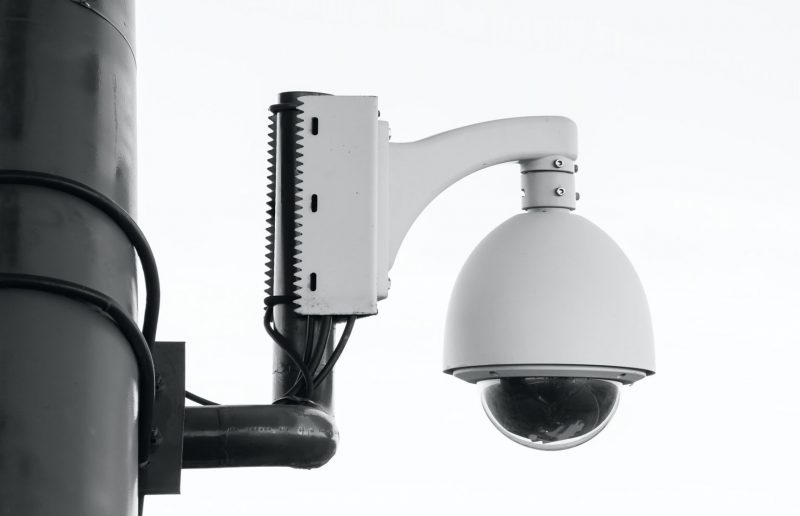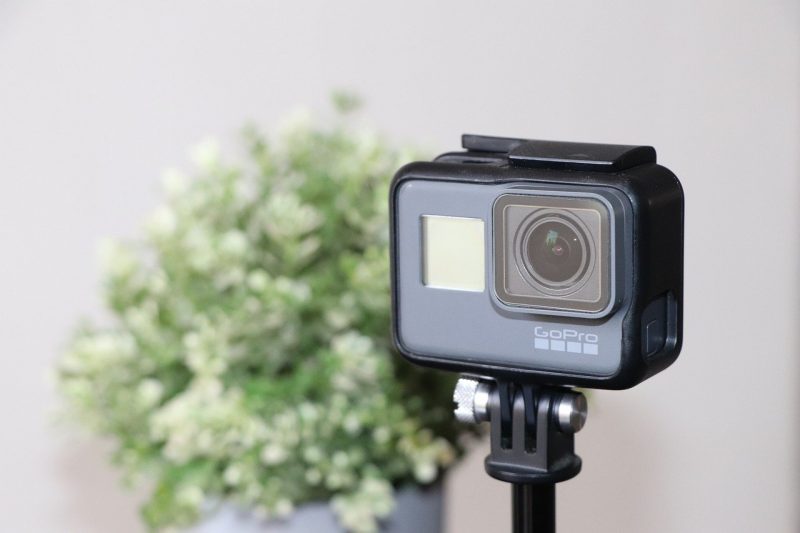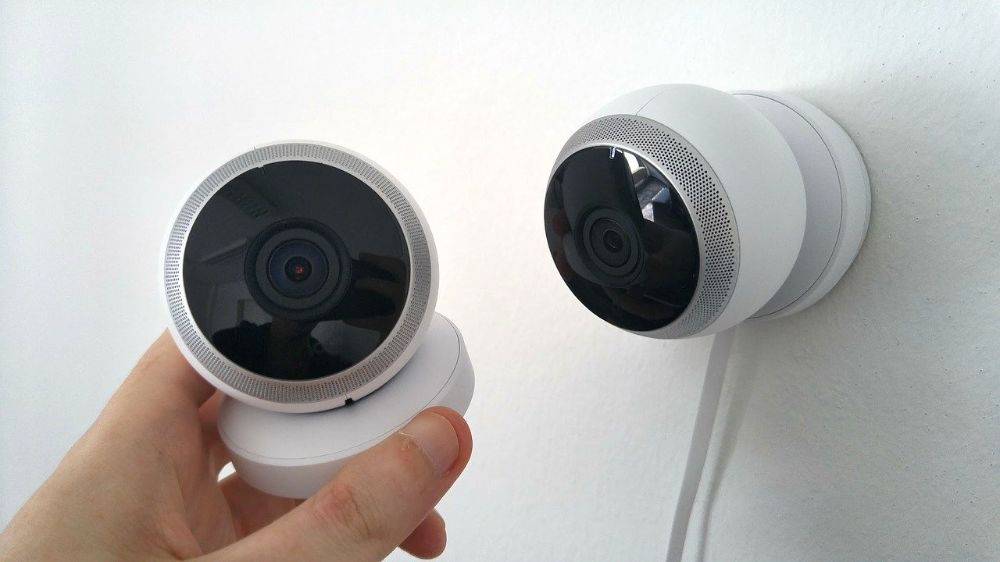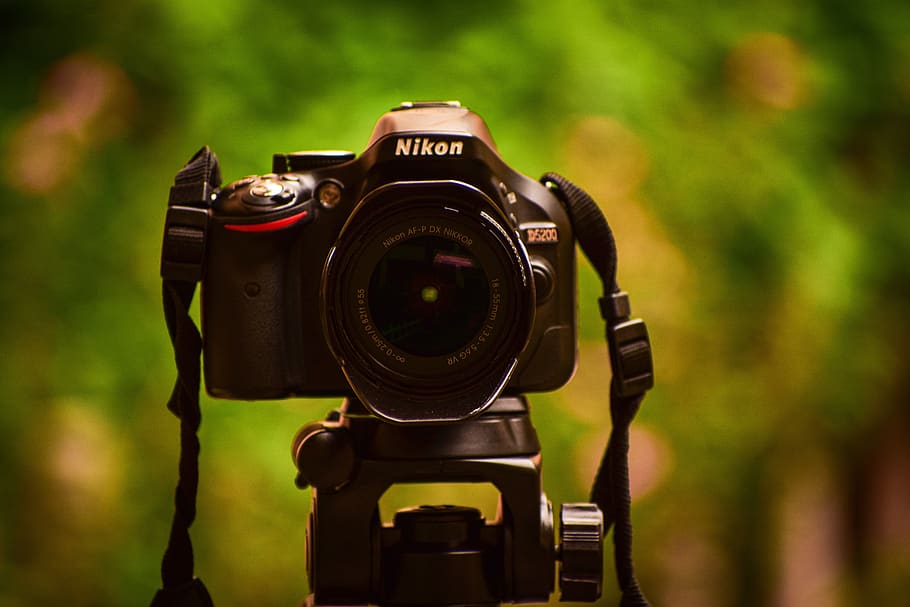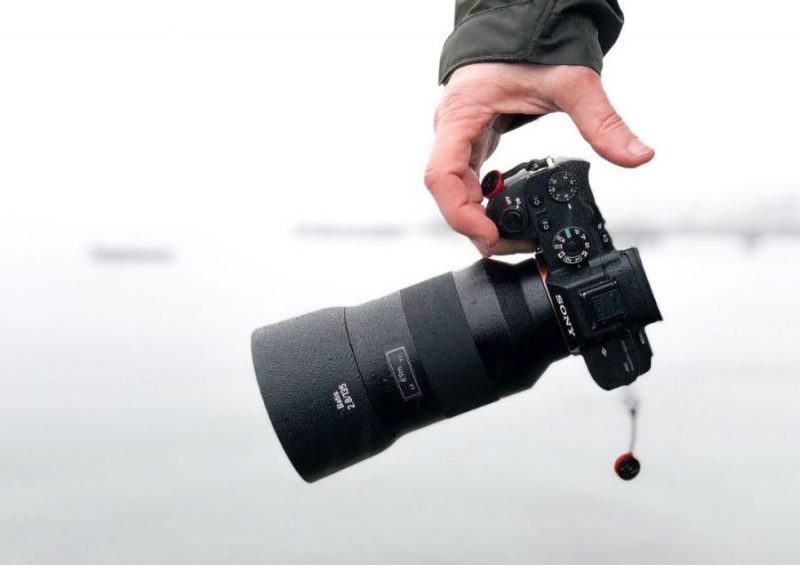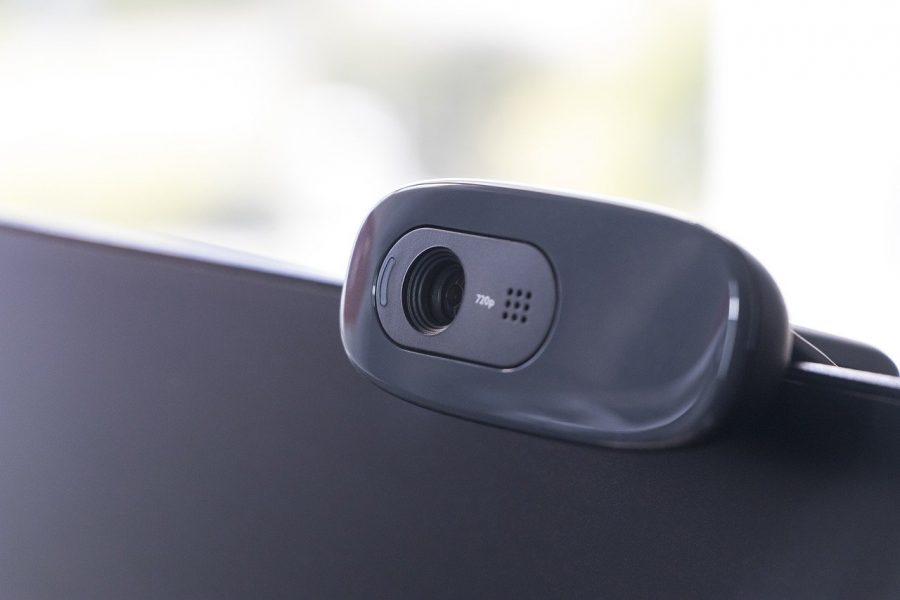If you are looking for some fun-time with your drone or RC car, an FPV camera can double it. What does FPV mean? The term FPV stands for First Person View; it is also known as RPV or Remote Person View camera.
However, the FPV camera will allow remote transmission to your feed from a specified range. It is not only fun but also can be used in various situations. However, your creativity only limits usages.
There are varieties of cameras out there in the market. But do not worry, we have picked some of the best FPV cameras through extensive research. By the end of this article, you will know all the necessary information to pick the best one for you.
Here are Our Top Recommended FPV Cameras at a Glance:
- Best Full-size: Foxeer Falkor 2 Mini FPV Camera
- Best Micro: RunCam Micro Eagle FPV Camera
- Best Mini: Foxeer Razer Mini Cam
- Best Nano: RunCam Split 3 Nano FPV Camera
- Best waterproof: Spektrum Waterproof FPV Transmitter Camera
- Best Durable: RunCam2 FPV sport camera
- Best Low-latency: RunCam Racer 3 Micro FPV Racing Camera
What Is FPV Camera Elaborately?
The FPV camera is a kind of small-sized camera that can transmit video feed. It is usually used on drones and RC cars.
The FPV transmitter sends live video to Remote Control screen, smartphone, monitors, etc. This camera transmits the driver/pilot’s view of the vehicle.
These types of cameras are commonly seen with unmanned aerial vehicles (UAV), Radio Controlled aircraft and RC cars. The usage of FPV goggles has seen a rise in recent years.
FPV camera is very lightweight, versatile, and easily mountable. It takes very little space on the carrier and uses radio frequency to communicate. The frequencies have long-range and better object penetration. Mostly, these devices are used for aerial photography and videography.
What are the FPV Camera Types?
FPV cameras serve many purposes. It will ultimately depend on you that how you want you use it. There is no hard and fast rule when categorizing these devices. In general, from the technical perspective, they can be put into two main categories.
CCD: The term CCD means Charge-Coupled Device. It uses a thin layer of silicon chip to capture pictures. The CCD devices have very low latency. They perform better in low light. The color, captured from this camera are more natural. They also give more consistent performance than CMOS.
CMOS: CMOS stands for Complimentary Metal Oxide Semiconductor. These are famous for their low power consumption. CMOS cameras give high-quality images and very easy to integrate with RF circuits.
The Best FPV Camera: Our Honest Recommendations
1. Best Full-size FPV Camera – Foxeer Falkor 2 Mini FPV Camera
We’ve picked it as the best pick list because it offers the most useful features while being versatile and durable. You can use it for almost all situations.
Features Detail
The best feature of this camera is its 1200TVL resolution. This will give you a sharper picture. It supports remote control as well.
Besides, there are two ratios available, one being 4:3 while another is 16:9. You can switch aspect ratio and formats to your liking. There is also an option for auto environmental adaption.
It uses 1/3″ CMOS sensor and performs great under all situations. The weight is only 8.7 grams. Being very lightweight will save your fuel. This product also features switchable PAL and NTSC format.
Suggestion
Sometimes when flying at night, a light might keep blinking as it alters between night and day mode. To solve this, go to OSD settings and then change the value to anything except auto. That should solve the problem.
However, this camera performs very well in all scenarios except for racing. This is the Best FPV camera for fixed-wing drones. Still, not convinced?.
👍 Pros:
- Great build quality
- Color protects from the heat
- Super Light Weight
👎 Cons:
- Has difficulty detecting day and night
- Connecting other 3 pin connector is tough
2. Best Micro – RunCam Micro Eagle FPV Camera
Features We Like:
- Good Image Quality
- Built-in Microphone
- Good Low Light Performance
- 6 level WDR
- Can Take Mirro image
We picked it because of its good quality image capturing ability in both day and night. It can be used for racing too.
Features Details
It has adjustable WDR settings. This device has a relatively low weight. The FOV is 170 degrees, and the resolution is 800TVL. It has a dimension of 19mm x 19mm x 23mm.
The reason behind its excellent performance both in daylight and night is the adjustable WDR. The low weight saves fuel, and latency makes it fun to use. It can be easily fit anywhere due to the small size.
Besides capturing quality photos, it offers low latency. Which means you can use it for racing or other action-packed sessions. So you will have the advantage of capturing quality photos and fast-paced action sequences.
Suggestion
The manufacturer used CMOS, which is optimized with an algorithm. The installation process takes a little effort. It heats up on more prolonged use.
To prevent this, you will have to dig into some settings to get the optimized settings. There are plenty of resources on the internet that can help you to set up. You will need to ensure airflow and use a better heat sink to tackle the overheating.
👍 Pros:
- Adjustable WDR level
- Supports multiple ratios
- Built-in microphone
👎 Cons:
- Overheating
- Heat affects the transmitting signal
3. Best Mini – Foxeer Razer Mini FPV Camera
This one got picked into our list because the 2.1mm lens, 1200TVL, and other specs make it the best mini FPV camera. It will give a true wholesome experience for sure.
Features Details
This mini cam delivers a WDR video system with 1200 TVL resolution will give you clear image and video quality. The 125-degree field of view is enough to have a good look at the surroundings. It can capture great footage in both low and bright light.
To capture footage, it uses a 2.1 mm lens and 1/3″ CMOS sensor. With the Large lens and sensor, you could take great pictures with an excellent coverage area.
This camera supports both NTSC and PAL format. You wouldn’t have to worry much about the input voltage as it can work with 4-25 volts.
Suggestion
It does not come with an adapter. The weight is also a little higher than the previously mentioned ones.
You might have to spend extra for the adapter if you don’t happen to have one extra.
👍 Pros:
- Supports a wide range of input voltage
- Good Field of view
- Shoots dynamic images in low light
👎 Cons:
- Can get tight for small frames
- Only one aspect ratio
4. Best Nano – RunCam Split 3 Nano FPV Camera
The latest split 3 has HD recording capabilities at 60fps. This is why this product have got a place on this list. Besides, this camera is very flexible and small in size. It is very suitable for mini drones as well.
It needs a small mounting space of 20*20 mm while also being very lightweight. The camera is separately connected through a ribbon wire. The build is based on a modular structure.
However, the small and modular design will help you to mount it in any kind of drone. The 60 fps rate allows recording very smooth videos. You will have the freedom to set it up as you like because of the modular design.
If you are experienced with flying drones and looking for something new, you should definitely take a look at this.
👍 Pros:
- Modular Design
- Great Video Quality
- Very Versatile
👎 Cons:
- Break on impact
- Delicate wiring
5. Best Waterproof – Spektrum Waterproof FPV Transmitter Camera
Features We Like:
- Integrated Transmitter
- Well Built Protective Outer Shell
- Remote channel Selection
- Wide-angle and 700TVL
This spectrum product is water-resistant. We chose this item for this unique trait. Besides, it is shock and dust resistant also. This feature gives you a kind of freedom that others do not.
It has an outer shell built around it. The 25mw transmitter is integrated internally, and the device uses a 5.8 GHz signal. The receiver can be powered through AUX port. It records video at the resolution of 700TVL with FatShark camera.
The outer shell makes it resistant to water, dust, and other harsh environments. The 25mw transmitter can transmit splendid video. When using AUX for powering receiver, you will have the option for remote channel selection. It also has auxiliary power filter to prevent interference of motor and servos.
Suggestion
The video cuts a little portion from the start. The cover might break from heavy impact.
To address this problem, you will have to early. And, to avoid breakage, drive carefully.
👍 Pros:
- great fit with quadcopters
- water resistant
- Easy to install
👎 Cons:
- Mounting kit not included
- Needs more space
6. Best Durable – RunCam2 FPV Sport Camera
Its durable housing contains the camera, a battery, and a microSD card. We chose it because it offers the best durability, easy to use, and supports app. It can withstand hard crashes and still keep the recordings intact.
The matte colored cover is coated with UV-Proof coating. It has a specially designed lens hood. The device also has WiFi and app support. Moreover, it supports both 1080p and 720p resolution.
The RunCam2 FPV sport camera you can use it for an intense session because it is durable and save your recording. The ability to switch between 1080p and 720p will give you more freedom over memory usage.
Finally, the specially designed lens hood will save the clips from glares. And the WiFi and app support extends the usability even more.
Suggestion
It does not have much space for airflow under the covers. It weighs a little more than the most.
So you will have to avoid long flying sessions. You will also need a bigger battery and lift to use it to its full extent.
👍 Pros:
- Very durable
- Records in both 1080p and 720p
- App supports
👎 Cons:
- Over Heating
- A bit heavy in weight
7. Best Low Latency – RunCam Racer 3 Micro FPV Racing Camera
Racer 3 is the best low-latency camera with OLED goggles compatibility for racing drones. It also creates very little noise on videos. This is the reason it got picked into our list.
Feature Details
The highlighting feature of this product would be 6 ms latency. It also provides 1000 TVL resolution. Runcam Racer 3 supports OLED goggles. The firmware has app support. There are three preset scene modes.
The biggest benefit of this cam is that the users get low latency. It helps immensely and gives an edge to the user. The 1000 TVL resolution can capture clear and crisp images, and OLED goggles will provide a cutting edge experience when racing.
Finally, you can update the firmware via the SpeedyBee app. It definitely will give an unparalleled experience for racing competitions.
👍 Pros:
- Very Low Latency
- Goggle Compatible
- App support
👎 Cons:
- High maintenance
What Are The Key Features Of The FPV Camera
There are plenty of devices out in the market. But, finding the right one is been never easy. It is easy to forget about the main features while judging little intricacies. In this section, we discussed the must-have features of the FPV camera.
Camera Technology
There are two types of technologies used in these products. They are CCD and CMOS. CCD cameras do not have a jello effect, but they cost more. On the other hand, CMOS cameras are cheap and easy to use with RF circuits.
If you are going to use it for racing or there might be many collisions, then using CMOS is better because they will be cheap to replace. CCD will work better in safe environments like using for photography.
FOV
Field Of View or FOV determines how much area could be covered. It is measured with a degree of angle. FOV can vary from 80 degrees to more than 160 degrees.
Unless there is any specific requirement, we recommend FPV of 140-160 degrees.
Resolution
It might be confusing that the resolution in these products is measured in TVL. Which means Television Lines. TVL is used in analog cameras where MP is used for digital cameras. However, the TVL value should be 75% of the Pixel units.
In general higher Television Line will take more time to transmit increasing latency. So, you will have to find a balance between them.
Aspect Ratio
Buyers often tend to forget this important feature. There are mainly two types of aspect ratios available. The widescreen and the squared one.
Picking the right aspect ratio depends on the kind of monitor you have. If the TVL ratio does not match the monitor or display, you will have many unused spaces.
Format
These cameras use mainly two types, on formats that are PAL and NTSC. NTSC offers a better frame rate where PAL provides better quality.
Though the difference is not significant, they should get preference based on the work field. If you need if for intense action sessions, NTSC with a higher frame rate will serve better. For other purposes, PAL would be a better choice.
Low Light
CCD offers a better solution to low light than CMOS. It has a dynamic range that helps it adjust images when there is a bright light and low light.
On the other hand, CMOS does not offer any special solution to low light problems.
Latency
This is one of the essential features to look for when buying. Latency is – the time it takes to receive a transmission from the camera. Latency depends on the quality of the FPV camera and transmitter.
If latency is high, the drone might have traveled more than what the pilot sees in the monitor. Higher latency often time causes a crash. Lower latency is better. Lower latency should be a top priority, especially if you’re looking into racing.
IR Filter
Ever fancied flying at night? IR filter allows you to do just that.
This is something some buyers don’t even consider, but it will give you a much different experience altogether.
How Does An FPV Camera Work?
FPV devices have two basic components. One is the airborne component; another is the ground component. It uses radio frequencies to communicate. There is a transmitter on the airborne part and a receiver on the ground component. Some advanced cameras might have specialized hardware.
The components communicate between them using 900 MHz, 1.2 GHz, 2.4 GHz, and 5.8 GHz frequencies. These are the generally used frequencies; however, there are country-wise exceptions too.
So, when the camera is airborne, it captures videos, converts them into analog signals, and sends them to the ground component. Then the ground component converts that signal to the video feed.
The user’s experience might differ based on camera technology. CCD and CMOS provide different experiences in different situations.
Conclusion
It might get tough to pick the best FPV camera. We have put all the useful information in one place. Because the internet tends to get confusing sometimes, we made this article to help you decide accurately. By now, you should be confident enough to pick the best one you see fit.
Now don’t wait any longer; get you out there with your new buddy. We wish you all the best for your next adventure.








